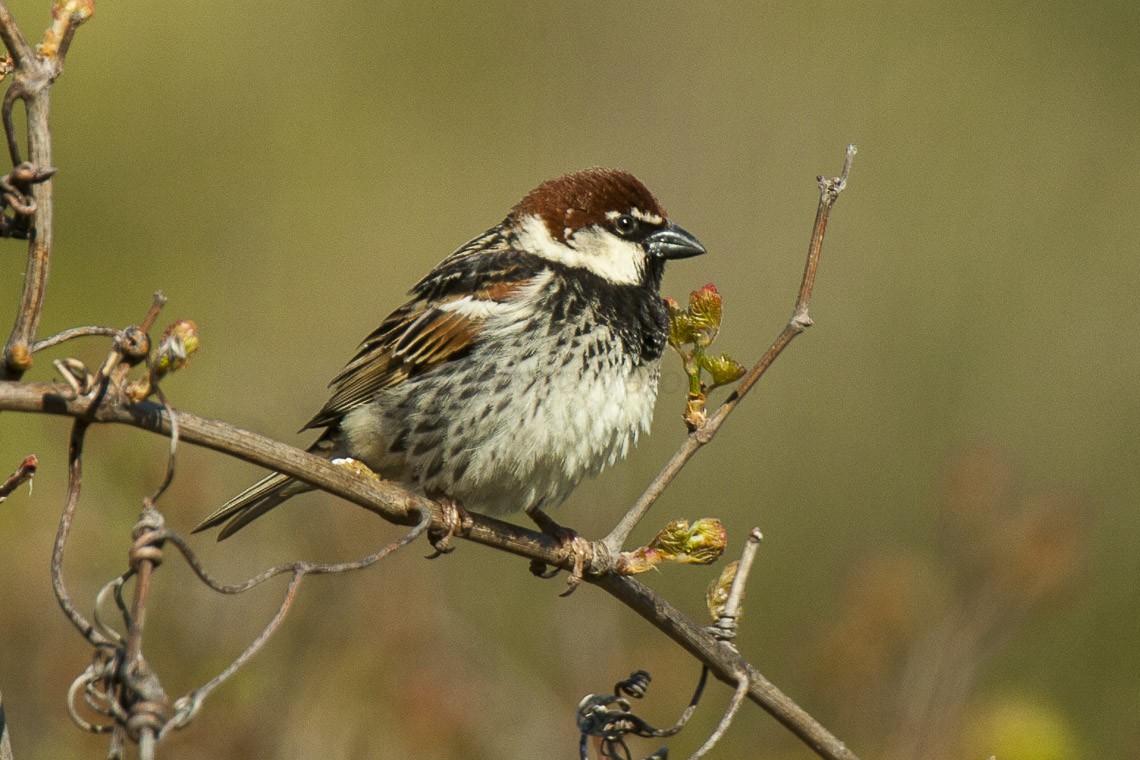Spanish Sparrow
A species of Old World Sparrows Scientific name : Passer hispaniolensis Genus : Old World Sparrows
Spanish Sparrow, A species of Old World Sparrows
Botanical name: Passer hispaniolensis
Genus: Old World Sparrows
Content
Description People often ask General Info
 Photo By Francesco Veronesi , used under CC-BY-SA-2.0 /Cropped and compressed from original
Photo By Francesco Veronesi , used under CC-BY-SA-2.0 /Cropped and compressed from original Description
The Spanish sparrow is a rather large sparrow, at 15–16 cm (6–6.5 in) in length, and 22–36 g (0.78–1.27 oz) in weight. It is slightly larger and heavier than house sparrows, and also has a slightly longer and stouter bill. The male is similar to the house sparrow in plumage, but differs in that its underparts are heavily streaked with black, has a chestnut rather than grey crown, and has white rather than grey cheeks. The female is effectively inseparable from the house sparrow in its basic plumage, which is grey-brown overall but more boldly marked. The female has light streaking on its sides, a pale cream supercilium, and broad cream streaks on its back. Two subspecies of the Spanish sparrow – the western Spanish sparrow (P. h. hispaniolensis) and eastern Spanish sparrow (P. h. transcaspicus) – are recognised, with little visible difference between them in worn breeding plumage. They are more easily distinguished in fresh winter plumage, with the eastern subspecies P. h. transcaspicus being paler with less chestnut. 
Size
16 cm
Colors
Brown
Black
Bronze
Gray
White
Cream
Life Expectancy
11 years
Nest Placement
Building
Feeding Habits
Spanish Sparrow's diet primarily consists of grains, grass seeds, leaves, fruits, and insects. Caterpillars, ants, grasshoppers, and crickets are opportunistically preyed upon, especially during migration and breeding seasons. Nestlings start with insects, transitioning to grains later. Feeding centers on availability, favoring crops in cultivated areas or wild flora.
Habitat
The habitat of spanish Sparrow encompasses farmlands and open woodlands with abundant moisture and vegetation. These birds thrive in the Mediterranean regions and adapt to urban settings in the absence of the house sparrow. Spanish Sparrow selects areas that benefit from human agricultural activities, residing at elevations up to 2750 meters. Outside the breeding season, they exhibit nomadic behavior.
Dite type
Granivorous
People often ask
General Info
Feeding Habits
Bird food type
Behavior
The Spanish sparrow is strongly gregarious, flocking and breeding in groups. In the winter, it mostly wanders nomadically or makes regular migrations. Little is known of the Spanish sparrow's survival, and the maximum age recorded is 11 years. 
Distribution Area
The Spanish sparrow has a highly complex distribution in the Mediterranean region, Macaronesia, and south-west to central Asia. It breeds mostly in a band of latitude about fifteen degrees wide, from the Danube valley and the Aral Sea in the north to Libya and central Iran in the south. Its range has expanded greatly by natural colonisation over the last two centuries, in the Balkans, where it reached Romania, Serbia, and Moldova from 1950 onwards; and in Macaronesia, where its range expansion has been attributed to introductions and travel by ship, but was more likely natural colonisation by migrating birds. Vagrants occur widely, as far north as Scotland and Norway. A study has shown that vagrant individuals tend to occur very close to railway lines, much closer than with other vagrant passerines. This results suggests that Spanish sparrows' vagrancy and expansion may be facilitated in part by cargo trains. 
Species Status
Not globally threatened.
Scientific Classification
Phylum
Chordates Class
Birds Order
Perching birds Family
Old world sparrows Genus
Old World Sparrows Species
Spanish Sparrow